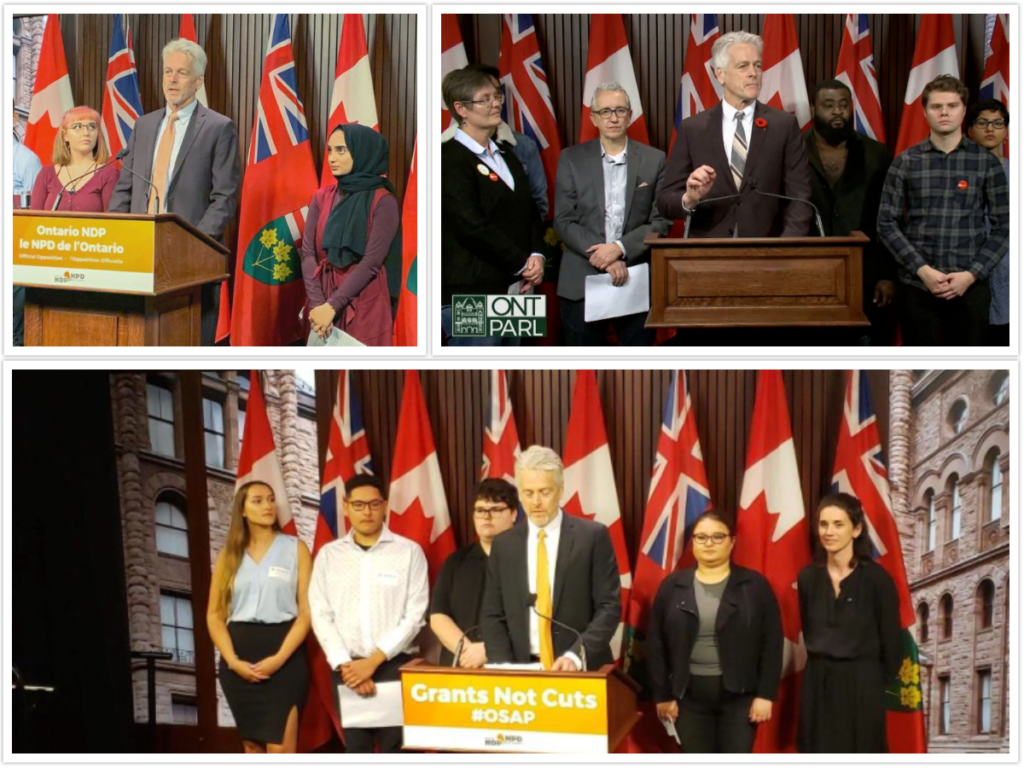The rebate would provide $1,000 to full-time Ontario post-secondary students

MPP Chris Glover recently announced a proposal for a $1,000 rebate to all full-time Ontario post-secondary students. The money is intended to be a dual relief effort for student job loss due to COVID-19 and Premier Doug Ford’s recent Ontario Student Assistant Program (OSAP) budget cuts. It would also provide $500 to all part-time students.
“Our education system is completely unaffordable in this province,” says Glover, who represents Spadina—Fort York. “The cost is a barrier to access–it’s a barrier to achievement.”
This comes after Doug Ford cut nearly $700 million from the OSAP budget in Jan. 2019. Under these new rules, most students who were receiving grants and loans will now only receive loans.
The majority of grants will be given exclusively to students whose household income is less than $50,000. This reduced grant program replaces the former Liberal government’s free tuition initiative for low-income families.
Ontario has some of the highest tuition fees in the country. Costs have doubled under the previous fifteen years of Liberal administration. Glover, a passionate advocate for reducing education costs in Ontario, has been working on the issue of affordability since 1985.
“Even before the pandemic, our students were struggling,” says Glover.
The governments in the past 35 years have “downloaded a ton of debt on the students,” he adds. “And a lot of stress. And fueled the mental health crisis on our campuses.”
The average student debt for Ontario undergraduates is $30,000, according to Statistics Canada.
York University student Erin Edghill credits Kathleen Wynne’s short-lived free tuition program for making university “feasible” for them. This program did not last as long as Edghill’s education, and they suffered “substantial” cutbacks to their funding under Ford’s new OSAP rules.
Edghill now expects to leave York with $12,000 of debt; a number three times higher than they originally budgeted for. They had to work 20 hours part-time during the school year and 60 hours during each summer just to stay enrolled.
An Ontario Master of Science student, who asked not to be named, says she was not given any grants to pursue her post-graduate degree, which led her to take a year off.
She has since re-enrolled, but says the sole loan she received doesn’t cover her full tuition, making it “nearly impossible for her to get the education she needs to work in the field she wants.”
A fellow Master of Science student says “about half” of his funding during undergrad was from grants, money he no longer receives. Due to Ford’s reduction in grants, the student says he “would not be able to afford to attend university” without scholarship funding.
The Conservative government said in a Jan. 17, 2019 press conference the reason for the cuts was to focus on Ontario families needing education funding the most.
Merrilee Fullerton, Minister of Training, Colleges and Universities, says the previous program gave money to high-income families just for applying, with too few criteria applied. They also mandated a 10 per cent reduction in tuition costs for all post-secondary institutions, which they said will make up for the cuts.
“If students want to find real savings, they should look at their budgets,” says Ryerson student Jonathan Bradley.
However, Glover and his team say this 10 per cent tuition decrease is not enough to help Ontario university students, especially during a pandemic. Although Ontario students were eligible to receive the Canadian Emergency Student Benefit (CESB) this past summer due to COVID-related job loss, the benefit has since ended.
Glover’s proposed rebate is just the beginning of a larger affordability movement the NDP is pushing for post-secondary education in Ontario. Strategies will include removing interest on student debt, removing CERB and CESB from OSAP calculations, and converting OSAP loans to grants.
“What we’re asking for, the students have been asking for,” says Glover. He adds his goal is to “echo the voices” of student groups and organizations across the province. Glover plans to read the petition in the legislature at Queen’s Park once it reaches 1,500 signatures.
